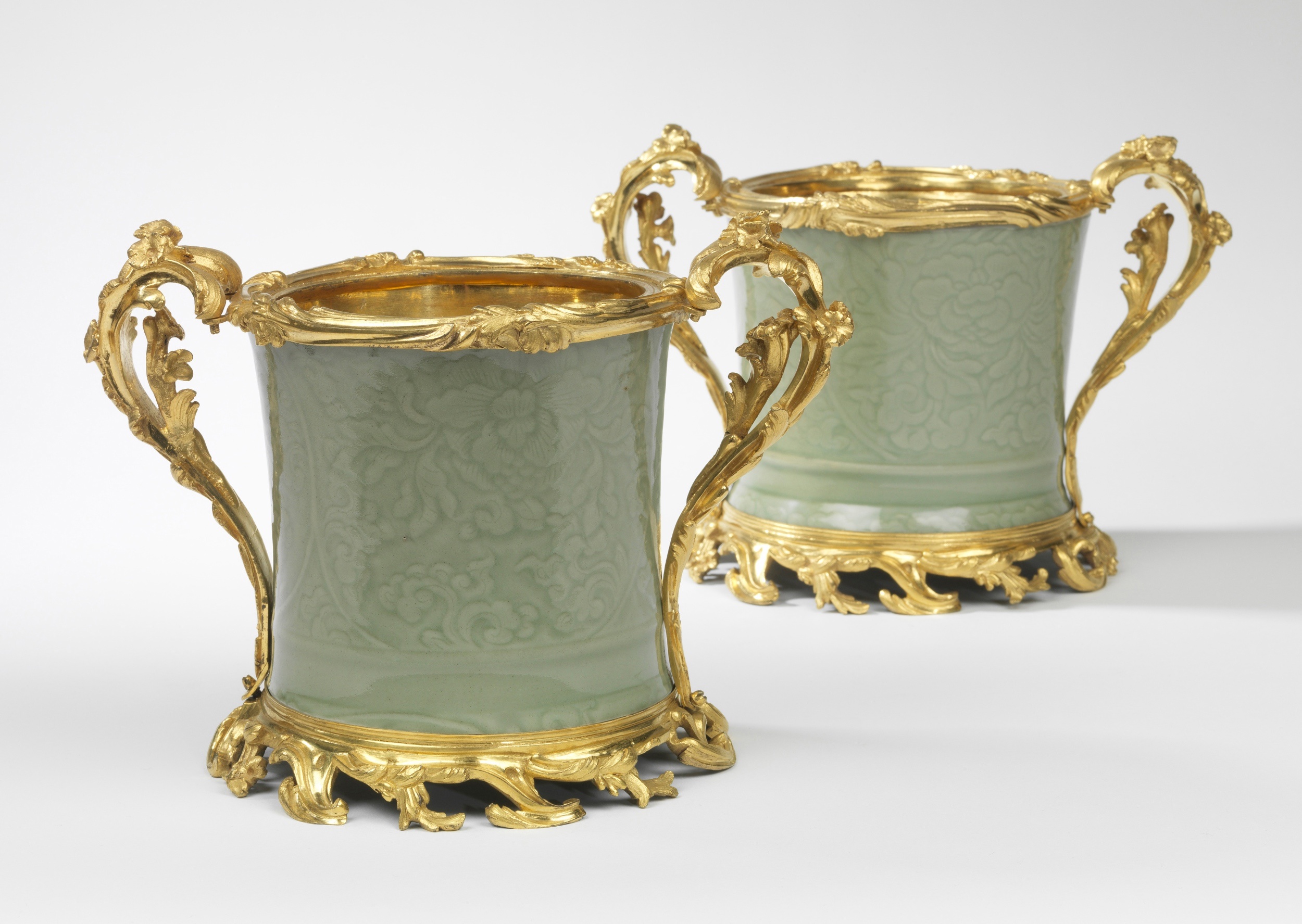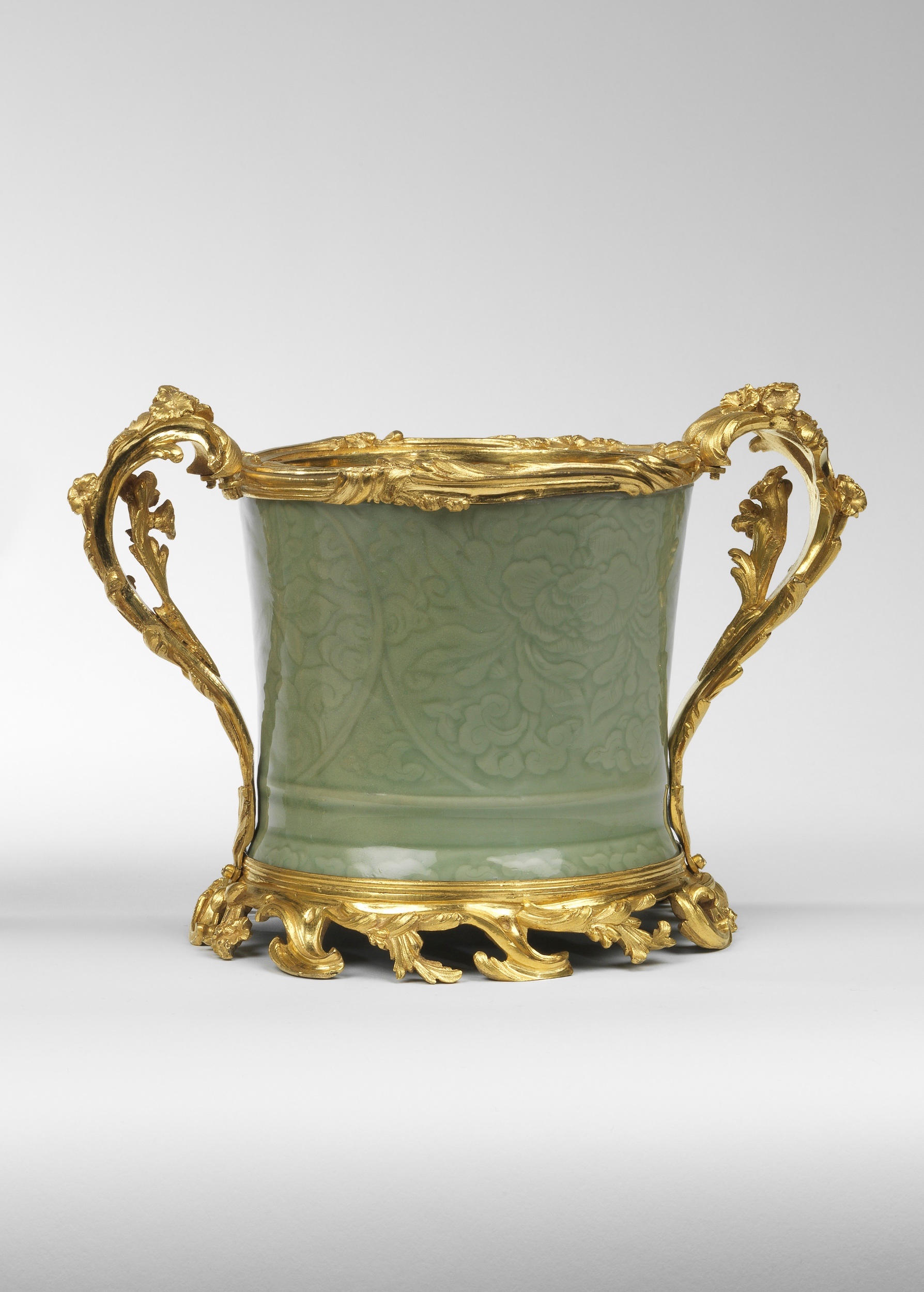

1745-49


Each of cylindrical form, the celadon decorated with incised flower and stylized leaf motifs, with a scroll and stylized leaf cast rim mount and two scrolled handles with acanthus and flowerheads, the base with alternating c-scrolls, rocaille, foliage and flowers; each with the “C” Couronné 1745-49 mark to bronze.
Daniel Alcouffe, Gilt Bronzes in the Louvre, Paris, 2004, p. 95.
Gillian Wilson, Mounted Oriental Porcelain in the J. Paul Getty Museum, Los Angeles, 2000, p. 66-71.
The taste for finely mounted oriental porcelain, which had already flourished during the previous decade, reached its peak in Paris in the 1750s. The marchand-mercier Lazare Duvaux (1703-1758), who worked closely with the best bronziers of the age, including Jean-Claude Duplessis (1699-1774) and Jacques Caffieri (1678-1755), frequently supplied his prestigious clientele with such vases. For instance, in December 1752 his diary registers the sale of “deux vases de porcelaine céladon ancienne, montes en bronze doré d’or molu” to Madame de Pompadour, one of his most preeminent patrons and a collector of celadon objects.
One lacquer cachepot with almost identical mounts and stamped with the “C” Couronné was possibly delivered by Duvaux to Madame de Pompadour at the Château de Bellevue and was purchased by the Louvre in 1932, illustrated by Daniel Alcouffe, op. cit., p. 95.
Other examples of celadon porcelain vases mounted in the same spirit and also dating from the mid-18th century, are the pair of cachepots previously in the collection of Sir Julius Wernher at Bath House, Piccadilly, sold in these rooms, 8 July 2008, lot 19, and a pot-pourri now in the Getty Museum, illustrated by Gillian Wilson, op. cit., p. 66-71, no. 13. The crowned C poinçon was a tax mark on any alloy containing copper used between 1745 and 1749.
| Dimensions | CM | Inches |
|---|---|---|
| Width: | 26 | 10 |
| Depth: | 15 | 6 |
| Height: | 18 | 7 |